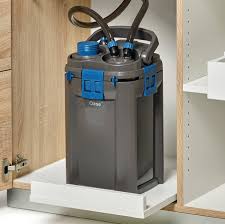
Aquarium Filters
Aquarium filters are essential for maintaining a healthy environment in your tank by removing waste, toxins, and excess food while helping to keep the water clear and oxygenated. There are three main types of filtration that most aquarium filters provide:
1. Mechanical Filtration
-
Purpose: Removes solid particles like uneaten food, fish waste, and plant debris.
-
Media: Sponges, filter floss, or pads.
2. Biological Filtration
-
Purpose: Supports beneficial bacteria that break down harmful ammonia and nitrites into less harmful nitrates.
-
Media: Ceramic rings, bio-balls, porous rocks.
3. Chemical Filtration
-
Purpose: Removes dissolved substances like medications, tannins, and odors.
-
Media: Activated carbon, resins, zeolite.
Types of Aquarium Filters
| Type | Best For | Pros | Cons |
|---|---|---|---|
| Hang-on-Back (HOB) | Small to medium tanks | Easy to install and maintain | May be noisy; limited bio capacity |
| Canister | Medium to large tanks | High filtration power, customizable | More expensive; more complex to clean |
| Sponge | Small tanks, breeding tanks | Gentle, great for biological filtration | Limited mechanical and chemical filtration |
| Internal | Small to medium tanks | Compact, easy to install | Takes up space inside the tank |
Tips for Choosing a Filter
-
Tank Size: Match the filter’s flow rate (measured in GPH or LPH) to your tank’s volume.
-
Stocking Level: Overcrowded tanks need stronger filtration. Larger Cichlids will require a high turn over.
-
Aquarium Type: Planted, freshwater, or saltwater setups have different needs.
-
Maintenance: Choose a filter you can clean easily and regularly.
- Ask Us For Help: At FishCove Aquatics we are more then happy to talk you through you options when it comes to filter as you want to get this right.
